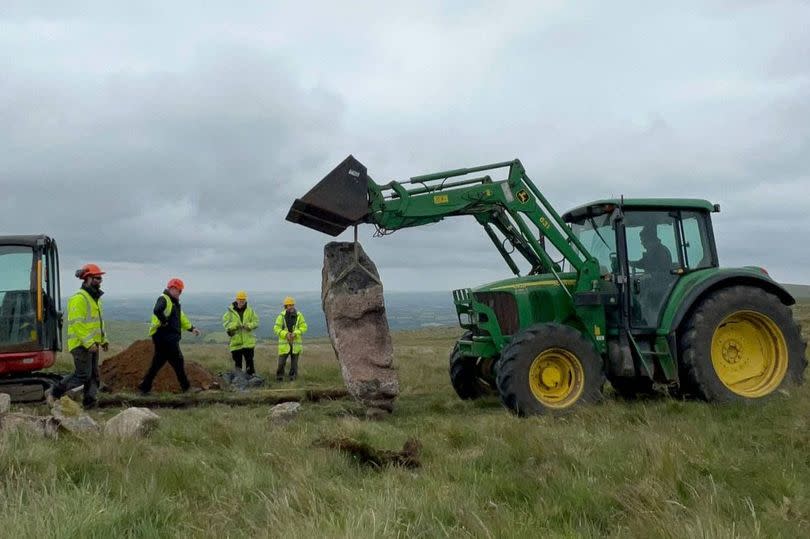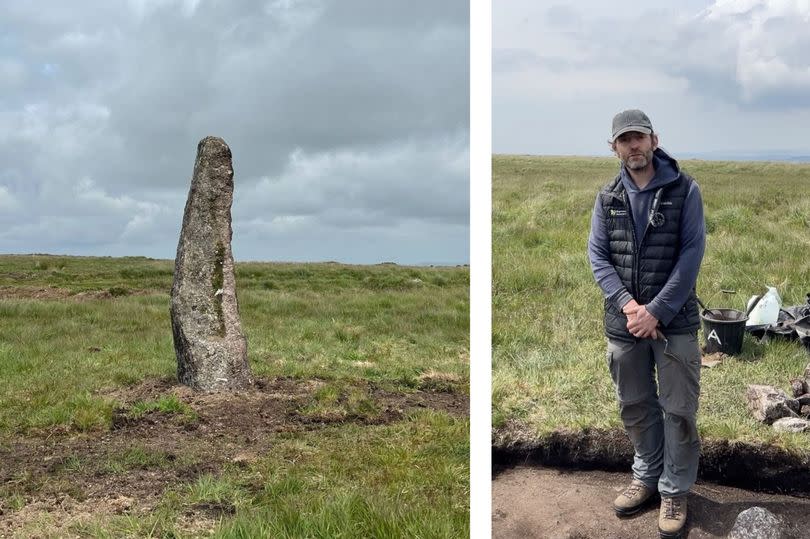Dartmoor's Neolithic monuments restored to former glory

Two key stones in one of Dartmoor’s most enigmatic monuments have been restored to their original upright position. Archaeologists, landowners and volunteers worked together to re-stand the monuments forming part of the double stone row at Piles Hill.
The avenue of stones stretches for 850 metres east to west across Ugborough and Harford Moors. It is thought to date back to the Neolithic/Early Bronze Age - some 4,000 years ago.
Experts believe stone rows like the one at Piles Hill would have had considerable importance for those who created and used them. Over 85 examples of this type of monument survive on Dartmoor - and the project also uncovered evidence of another stone that has been lost over time.
Read next:
National Park Archaeologist and Excavation Director Andy Crabb said: “This has been a fantastic project and a real privilege to work on such an important site. With the help of a fantastic team of volunteers we have completed all our onsite objectives.
“We revealed further features relating to the monument including a socket hole that once held a now missing standing stone. A flint core was also found which we think dates to the Early Bronze Age.
"The support from landowners, wider project team and Historic England has been great. Finally, it was wonderful to see the two stones replaced back into their positions within the row."

The project is part of the three-year £3million Our Upland Commons initiative, which includes work to better understand this part of Dartmoor. It has also explored whether the stones, many of which were flat on the ground, were deliberately laid that way or had fallen over and become hidden by vegetation.
Excavations last year confirmed the stones were once upright. The dig also unearthed a white quartz cobble-like surface, which appeared to suggest it had been deliberately laid to enhance the setting of the double stone row.
Last week - and coinciding with the summer solstice - two stones were carefully restored to their upright positions.
Ugborough Moor landowner Dr Leonard Hurrell said: “It was very interesting to watch the excavation of the sockets of several of the fallen stones in progress last year, and to see the unexpected quartz pavement. When this very long double stone row was erected, it must have been a truly dramatic feature in the landscape, straddling the watershed between the River Erme and the Glazebrook, and must have been of great significance to the inhabitants of the area.
“We are delighted to see that the uprighting of two large stones has been possible, giving visitors to the area a glimpse into the distant past.”
Harford Moor landowner John Howell said: “As the stewards of this amazing national heritage, our family has long wanted to re-stand the stones to make them back into the significant landscape feature that they once were. I’m delighted to see this process starting at last."
Click here to join PlymouthLive on WhatsApp and we'll send breaking news and top stories directly to your phone. We also treat our community members to special offers, promotions, and adverts from us and our partners. If you don’t like our community, you can check out any time you like. If you’re curious, you can read our Privacy Notice.

 Yahoo News
Yahoo News 
